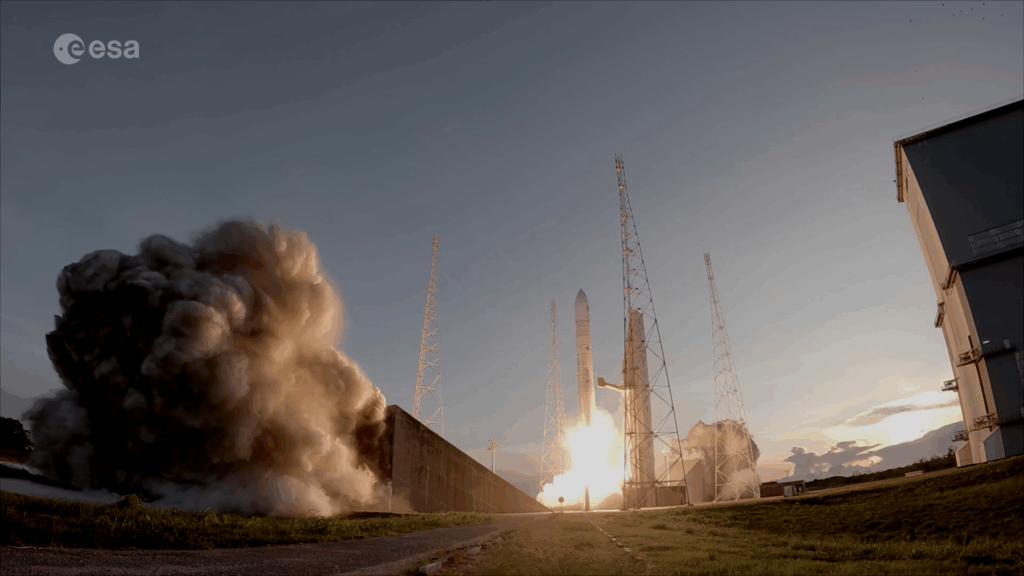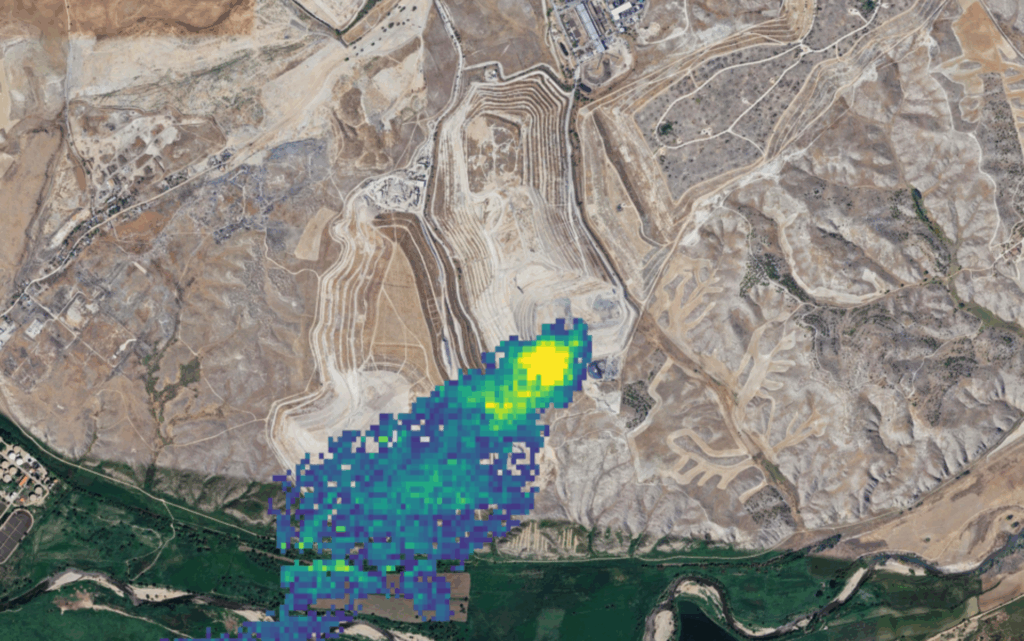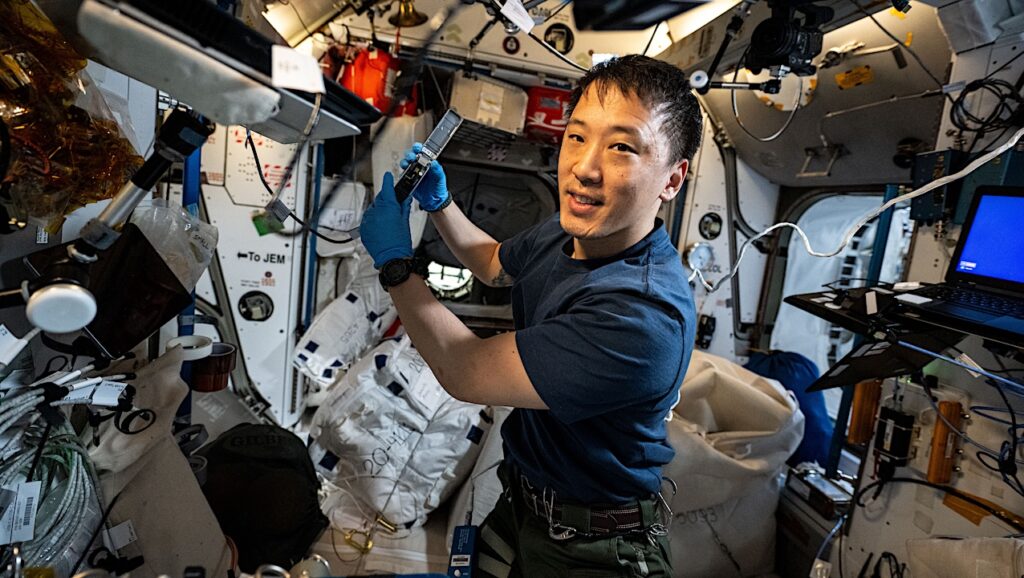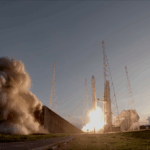Now Reading: Tricorder Tech: Testing Away Team Tools For The Moon And Beyond
-
01
Tricorder Tech: Testing Away Team Tools For The Moon And Beyond
Tricorder Tech: Testing Away Team Tools For The Moon And Beyond
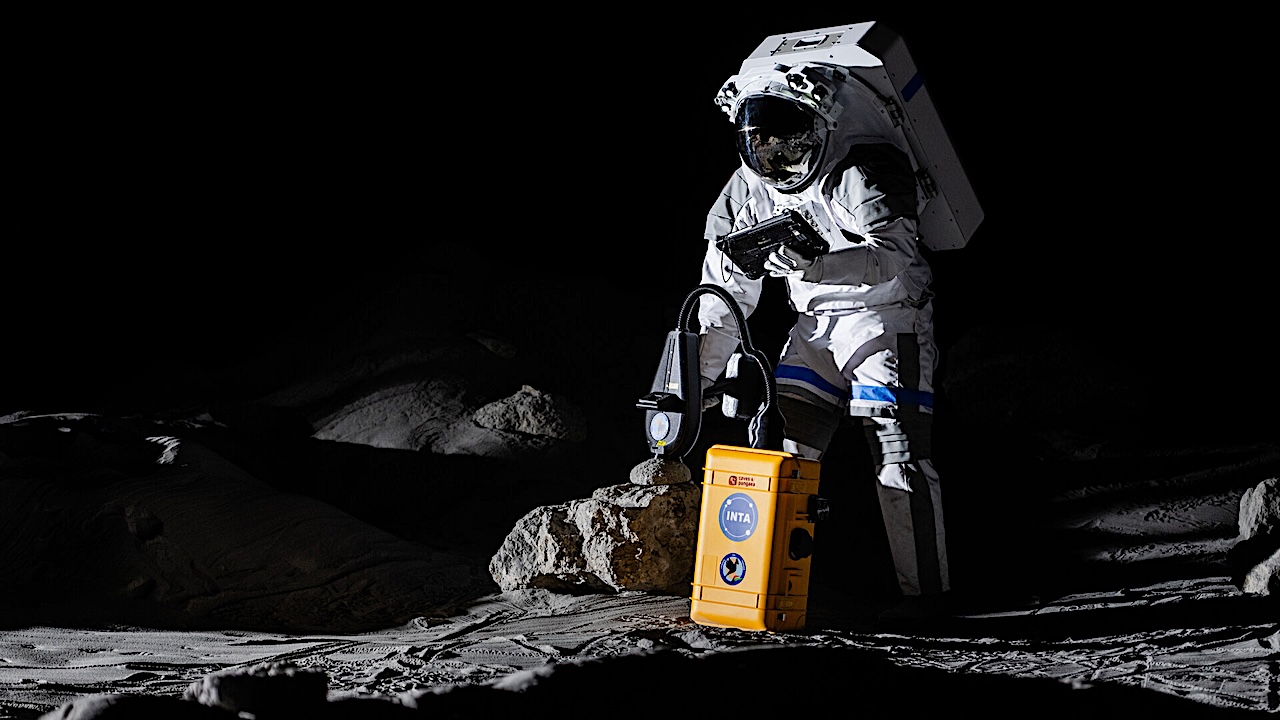

Bathed in realistic lighting, this was the first rehearsal to try out the ergonomics of scientific tools to study the mineralogical and chemical composition of regolith – the dust, soil and rock on the Moon’s surface – in a lunar-like environment.
Future missions to the Moon will benefit from real-time, on the spot and accurate geological analysis. Astronauts could quickly decide what samples to collect, while robots could identify resources without human intervention on the Moon, Mars or asteroids.
European experts training astronauts in planetary geology during ESA’s PANGAEA campaigns have already stressed the need for high-tech survey equipment and minerological databases to make explorers scientifically productive during field trips and moonwalks.
Industry and research institutions responded to the call and developed PHOENIX, a combination of portable instruments capable of analysing minerals and their chemical elements at the same time.
Each of the PHOENIX instruments integrates two complementary analytical techniques: molecular (Raman) and elemental analysis (laser-induced breakdown spectroscopy or X-Ray fluorescence). The equipment also features a camera for alignment and allows wireless communication and data visualisation in real-time.
Some of the spectroscopy expertise derives directly from the ExoMars mission, whose Rosalind Franklin rover features a Raman Laser Spectrometer for analysing martian samples.
The trials at LUNA evaluated the toolkit’s usability for future crewed lunar exploration missions in a controlled environment. One of the challenges was the extremely fine and ubiquitous dust. This type of dust is a health hazard for humans, and it is also tough on electronics.
Outside LUNA, ESA astronaut Matthias Maurer, an advanced PANGAEA geology trainee, handled the instrument and provided valuable feedback for the engineers to understand how an astronaut would operate the device.
Beyond space exploration, the analytical power of PHOENIX in dissecting the composition of materials holds potential on Earth for geological research and industrial applications, such as quality control in pharmaceutical and food industries, archaeology, art history and crime scene investigations.
An international consortium designed and built the two PHOENIX breadboard instruments led by the Instituto Nacional de Técnica Aeroespacial from Spain, in collaboration with the University of Leicester in the UK, the University of Valladolid in Spain, and Mission Control Space Services Inc. in Canada.
Extensive testing and validation of the PHOENIX breadboards will continue. Teams will use lessons learned from the first trials to refine its design, improve performance and prepare for conditions on the Moon or Mars.
Astrobiology, Astrogeology, Artemis,
Stay Informed With the Latest & Most Important News
-
 012024 in Review: Highlights from NASA in Silicon Valley
012024 in Review: Highlights from NASA in Silicon Valley -
 02Panasonic Leica Summilux DG 15mm f/1.7 ASPH review
02Panasonic Leica Summilux DG 15mm f/1.7 ASPH review -
 03From Polymerization-Enabled Folding and Assembly to Chemical Evolution: Key Processes for Emergence of Functional Polymers in the Origin of Life
03From Polymerization-Enabled Folding and Assembly to Chemical Evolution: Key Processes for Emergence of Functional Polymers in the Origin of Life -
 04How New NASA, India Earth Satellite NISAR Will See Earth
04How New NASA, India Earth Satellite NISAR Will See Earth -
 05And Thus Begins A New Year For Life On Earth
05And Thus Begins A New Year For Life On Earth -
 06Astronomy Activation Ambassadors: A New Era
06Astronomy Activation Ambassadors: A New Era -
07SpaceX launch surge helps set new global launch record in 2024












